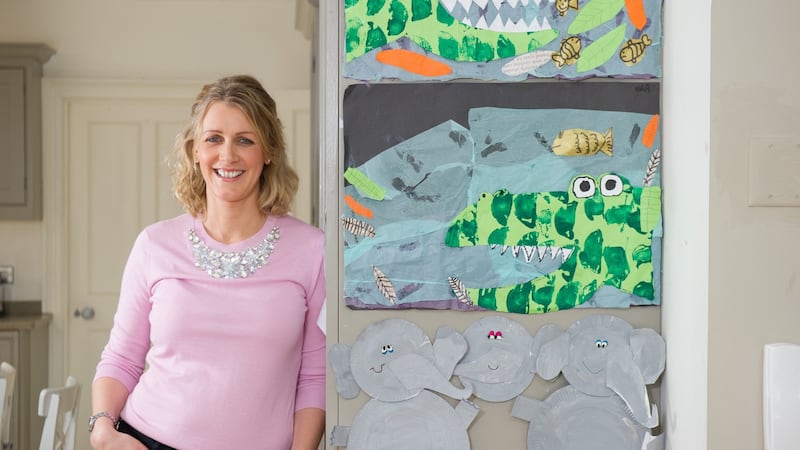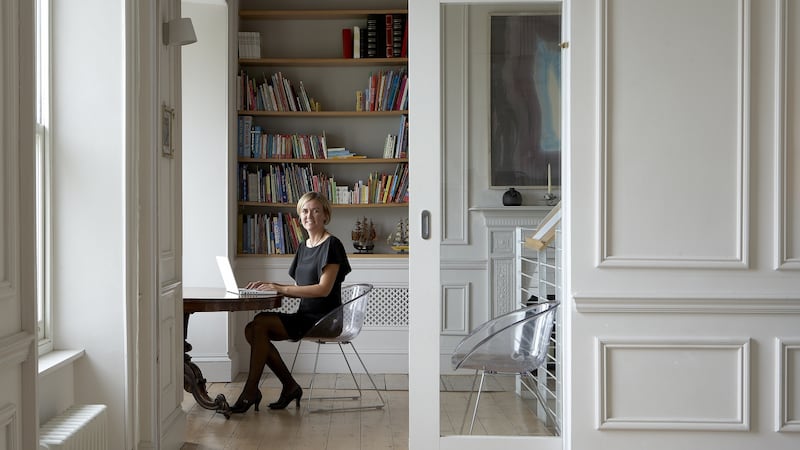It’s the perennial challenge – that even the Government has struggled with in its plans for the national children’s hospital – how do you bring a building project in on time, and on budget?
While ultimately the success of the project might come down to those who you employ to carry it out, what you can and should take control of is your own involvement in the project. So here are nine pointers to help you on your way.
1 Wise up on build costs
The costs of renovating or extending a home have risen sharply in recent years. Quantity surveyor Patricia Power will be familiar to many from her time on RTÉ's ever-popular Room to Improve, when she was often shown giving the bad news on costs to the clients (and she'll be returning to the screens later this year when she turns up on Dermot Bannon's own home renovation).
And as she so clearly asserts, costs continue to go up. Indeed she suggests that if you’re looking to do up your average 25-year-old four-bed semi-d and add an extension, you’ll now find a budget of €200,000 “very tight”.
She says you can now expect to pay at least about €2,000 per square metre of an extension – and she has some clients paying as much as €5,000. Back in 2016, the RIAI indicated typical costs of about €1,500-€1,900 per square metre.
So bear this in mind before you give your architect carte blanche; construction work is particularly expensive at present.

2 Get your expectations in check
As Power says, our mindset has now changed, to one where we expect a home to be completely gutted and made energy efficient, with a shiny fancy extension stuck on to the back. But is this always necessary?
Considering just what space your home offers, and whether an extension is really necessary – regardless of what the neighbours have done – can be worthwhile.
“Maybe you need to look within the house that is there,” suggests Power.
This approach also matters when you’re discussing your project with an architect – some of whom aren’t always as familiar with costs as they might be.
“Their job is to give you everything on your wish-list,” says Power, but adds that while some are better at doing that, “others can get carried away”.
So get a detailed costing done as early as you possibly can so you won’t be disappointed later on in the project. And if you do go for planning, “make sure you do it for something you can afford to build,” she says.
Power had a recent client for example, who needed to get four costings done – each one a diminution of the project that had gone before.
“You have to be real. My job is not to bring someone down a road and give them false hope. You have to know what it is going to cost,” she says.
3 Prepare, prepare, prepare
Fail to prepare, prepare to fail. “You need to put the time and effort in,” says Power, adding that this includes having a firm spec of what you’re looking for before you go out to tender.
“Make sure you have your architect’s and engineer’s drawings,” says Power, adding that you should be as “clear and detailed” as you can be in your spec. So if you’ve decided you want your bathroom tiled from floor to ceiling for example, include this in the spec – and there won’t be any confusion should the builder say he thought only minimal tiling was needed.
This way, there will be “less chance for variations when you hit the site,” she says.
Drawings are a crucial part of this process, and Power recommends drawings for even small projects. Using 3D drawings, or virtual reality, can be a useful tool in the early planning stages. One of the comments interior designer Gillian Sherrard hears the most is "Oh, I didn't think it would look like that".
But changes cost money. “Every time a client does change something, such as a light switch, it’s going to cost a builder money,” she warns.

4 Beware the ‘low ball’ offer
You put your spec out to tender and get three bids – two are similarly priced, but the third is 20 per cent cheaper. Your instinct might be to go for the lower bid, as has been suggested was an issue with the tender process for the children’s hospital; but this can backfire.
“I say to clients, that’s fine [about accepting the lowest bid], but go in with your eyes open,” Power says, adding that in some instances builders will look to claw back money on a lower bid, so it eventually costs you the same as if you had gone with the higher bid. “It does and can happen,” she says.
Sherrard says that opting for the lowest quote might mean that the builder is then “scrambling for extras” throughout the project.
“I’d usually advise go to builder that your architect or designer has built with before,” she says.
5 Understand what’s included – and what’s not
You’ve got your costings and are ready to go. But have you checked exactly what is covered under each heading?
“Most builders will only give a budget for builders’ work,” says Power. So, while this might include fitting a floor, it might not include the floor itself.
Some builders might include a notional charge, for the supply of tiles, for example, but bear in mind that this might be substantially less than what you had expected to spend for tiles that you actually want.
Experience has taught Sherrard that specific is terrific when it comes to getting a hold on costs. She will now ask for everything to be itemised, including such minor details as hinges on doors and adhesive for grout.
“You have to be really thorough with that specification and put everything in it,” she says.
For dealing with the unexpected, Sherrard’s “absolute golden rule” is a 10 per cent contingency “but don’t tell the builder that”, and she would increase it to 15-20 per cent for a protected structure.
“It’s 100 per cent guaranteed that there will be undiscovered things,” she says, but you can mitigate this by getting an accurate costing.
So tell the builder to come armed with a crowbar during their walk-around, to lift up floor boards and break into plaster, tell them to go into the attic and take photographs. “If the builder gives a price and he hasn’t done that I wouldn’t use him,” she says.
6 Negotiate, negotiate, negotiate
With a background in business, Sherrard likes to negotiate. And then negotiate some more, noting that quotes “are not written in stone”.
“It’s all about negotiating with builders,” she says.
And don’t be afraid of hitting builders with penalties if they go over the agreed terms of the contract, noting that she has threatened penalties of €5,000 for each week of delay.
“Make it enough so that it will cover your rent where you are,” she advises, but adds that it can be difficult to enforce.
Alternatively offer a bonus if the builders come in ahead of time; after all, moving back in earlier than expected could save you in rent.
7 Track your project
It’s one area where many of us fall down; understanding how long a particular task should take. If you don’t have a project manager employed to keep it on track, it can be difficult to understand just where the project is.
To counter this, Power suggests you ask your builder for a tracker, which should outline a week-by-week programme of roughly when they're going to complete a job. This tracker should also indicate the dates by which you will need to have picked certain items, such as a kitchen or windows; this can prevent delays caused by waiting for some tiles to arrive from Italy, for example.
8 Agree a payment schedule
One way to keep your project on track is to agree a payment schedule, so that work is only paid for once certain goals are met.
“Generally we only pay for work done and materials on site,” says Power, adding that if you have a good breakdown of costs, you can track this against the work being done on-site.
She would be “very cautious” on fixed-rate payments, which could leave you exposed if the work isn’t progressing as it should. She also recommends a 6 per cent retention fee; 3 per cent of which will be paid once the project is finished, with the remaining 3 per cent paid after a year.
9 Don’t procrastinate
Decisions can be difficult. Particularly when it’s for a door handle or a radiator you have never previously given consideration to.
Sherrard cites a recent example of a client who took two months to decide on light switches; the project ended up taking six months longer than expected. But delays cost money.
“For me, before the project even starts, you should have your tiles picked,” she says.












